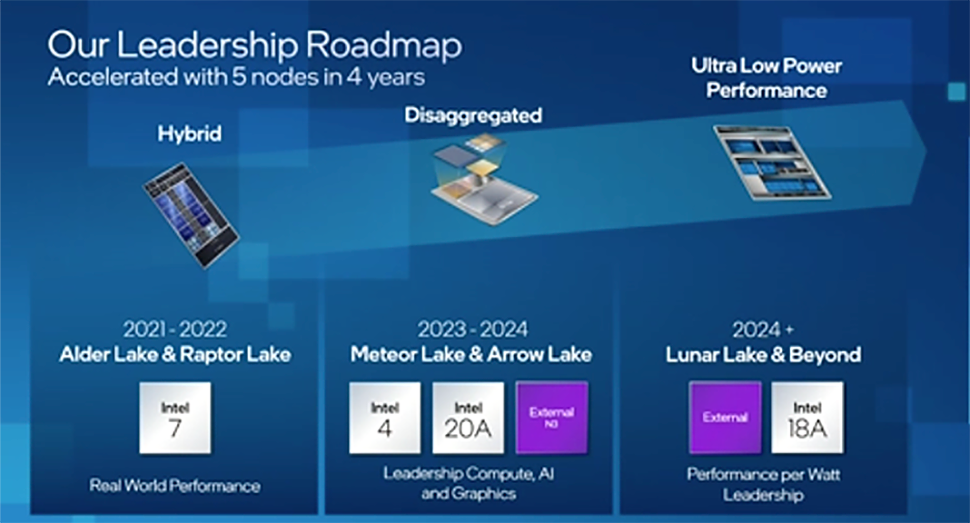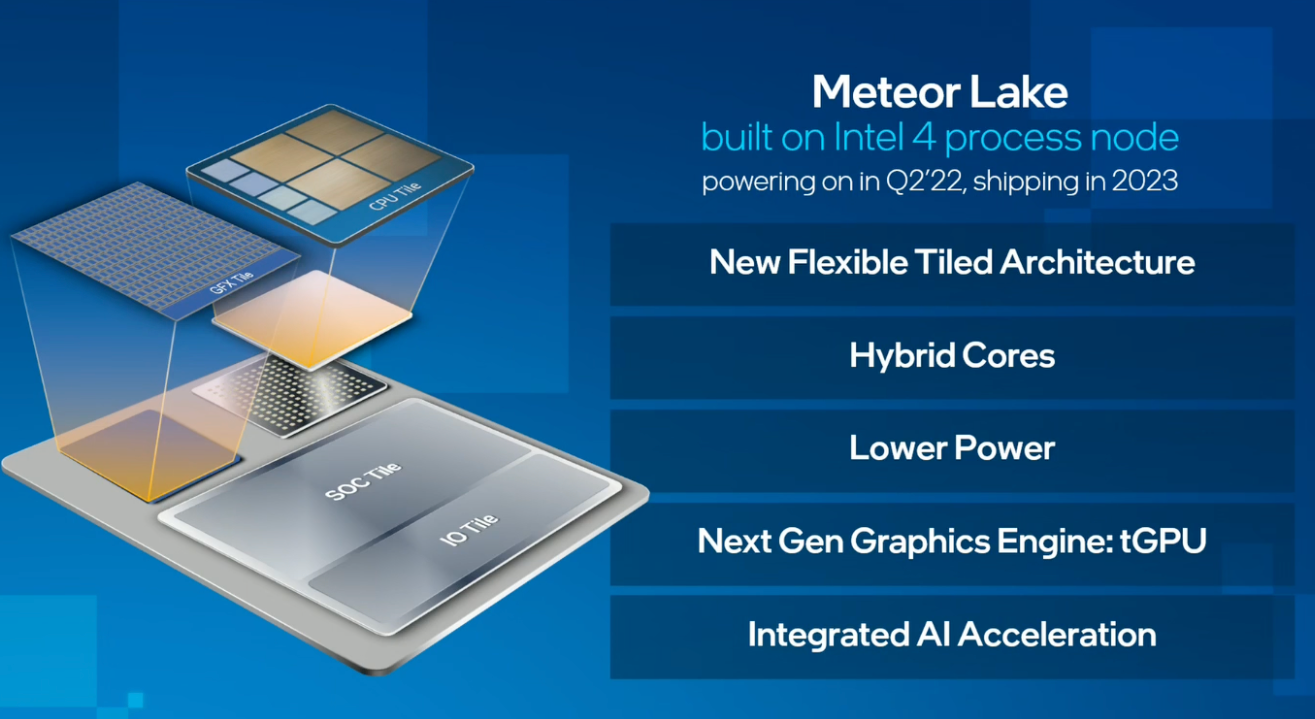Intel Roadmap Confirms Meteor Lake, Arrow Lake, Lunar Lake CPUs
Estimated launch dates for all the lakes
Intel demonstrated a working desktop PC based on its 13th Generation Core Raptor Lake processor made using its Intel 7 process technology at its Investor Meeting 2022. In addition, the company confirmed that multi-chiplet/multi-tile Arrow Lake and Lunar Lake processors would follow Raptor Lake in the coming years.
Raptor Lake: Following Alder Lake's Steps
Intel's 13th Generation Core Raptor Lake processors will pack up to eight high-performance and 16 energy-efficient cores that can process up to 32 threads simultaneously. According to Jim Johnson, senior vice president and interim leader of the Client Computing Group, Intel is looking at a double-digit performance boost compared to existing 12th Generation Core Alder Lake CPUs.
Intel plans to offer enhanced overclocking features with its Raptor Lake platform to please enthusiasts. Still, due to the nature of the conference, Intel didn't disclose either the nature of these enhancements or microarchitectures that will power the new CPU.
Intel's next-generation Raptor Lake processors will hit the market later this year and be socket compatible with Alder Lake systems. Furthermore, even BGA parts for notebooks will be compatible with existing systems, significantly simplifying the transition to the new platform and saving PC makers tens of millions of dollars on development activity.
Another exciting addition to the Raptor Lake platform will be a unique AI accelerator coming in an M.2 form-factor that will speed up specific workloads for those who need them.
Meteor Lake and Arrow Lake: Disaggregating Client CPUs
As reported several times now, Intel's Meteor Lake will follow Raptor Lake sometime in 2023. The processor will use a disaggregated multi-tile/multi-chiplet design interconnected using Intel's EMIB technology with its ingredient — the CPU tile — produced using next-generation Intel 4 fabrication process (previously known as 7 nm). Also, Meteor Lakes will use an all-new integrated GPU (called tGPU for now) featuring the next iteration of Intel's Xe architecture. Also, these processors will get built-in AI acceleration.
Usage of a flexible tiled design will enable Intel to build a highly differentiated product family to address different applications and needs. For example, Intel needs to create two entirely different silicon designs to manage customers demanding enhanced performance in games and make something for those who need strong CPU performance. With a tiled approach, things will get a bit easier. Still, do not expect Intel to offer too many odd/specialized configurations as advanced packaging is quite costly too.
Get Tom's Hardware's best news and in-depth reviews, straight to your inbox.
Intel's Arrow Lake will succeed Meteor Lake in 2024, it will continue to use a multi-chiplet design, but this time its CPU tile will be made using the company's Intel 20A node. Though Intel hasn't commented on this, Meteor Lake and Arrow Lake may share a common platform like Alder Lake and Raptor Lake.
Lunar Lake: Bringing Performance per Watt Crown to Intel
Perhaps the most intriguing part of Intel's client PC roadmap is its codenamed Lunar Lake CPU that will feature a tile fabbed using Intel 18A technology and which will come in 2024. Lunar Lake seems to belong to an all-new group of Intel's products, but it will co-exist with Arrow Lake in 2024, implying that the products will offer different qualities and features.
For the time being, Intel only says that Lunar Lake CPUs will bring in performance-per-watt leadership. So we can only speculate that this will be a mobile-first product, but keeping in mind that notebooks outsell desktops 7 to 3 these days, all modern designs take mobility in mind.

Anton Shilov is a contributing writer at Tom’s Hardware. Over the past couple of decades, he has covered everything from CPUs and GPUs to supercomputers and from modern process technologies and latest fab tools to high-tech industry trends.


